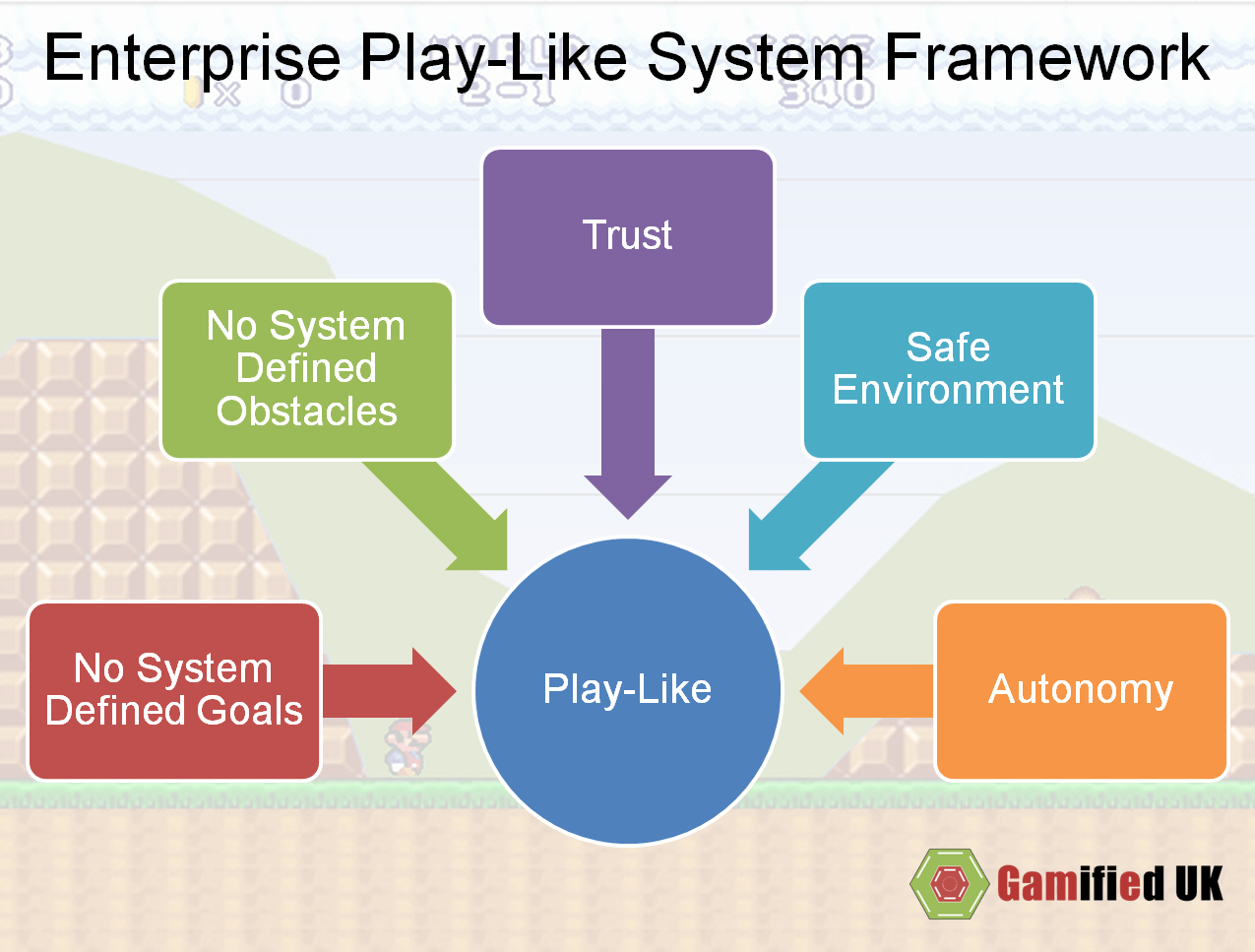Separating Games from Play and using it
All of this research into play and talking about play has been for a reason. I wanted to try and open up the idea of making more play-like experiences rather than more game-like experiences. I was trying to introduce some of the basics that separate games and play. For this there are three important differences between play and games that we need to keep in mind.
- Games have prelusory goals – ie, goals that you must achieve that have been set by the system.
- Games have rules that define how you have to achieve the prelusory goals (Lusory Means).
- They also have rules that create challenges to achieve the goals. Rather than going from A to B in a straight line, you have to overcome obstacles and solve puzzles going A to Z to E to B and back again! (Constitutive Rules)
In play, the goals are often less defined or not consciously apparent. Whilst there may be rules that dictate how play progresses (social rules, physical rules and so on), there are not that are there to deliberately challenge you or make things harder.
So to make things more play-like, you need to drop the predefined rules and goals as much as possible.
That is one part, the other part that is actually relevant to both game and play-like systems is to create a safe environment. Part of what makes play so compelling is that there is a reduced level of real danger to the participants. Animals playing don’t tend to deliberately hurt each other, they know that it is play. Kids playing are not afraid of the tower they are building falls over. It may be annoying, but it is not going to get them in trouble or cause any real issues. Even in games, dying in game is just a matter of losing a life – you can start again.
More importantly is that failure leads to learning and improving performance next time. But only if failure does not lead to a harmful punishment.
In the real world this all seems a little unrealistic. What company is going to let people just go off and do their own thing without fear of failure. Well…. Google for one. You must remember the 80/20 rule they made so famous a few years ago? The idea was that 20% of an employees time could be spent working on their own things. They did not have to produce anything, as long as they were trying. There was no punishment if their experiments failed, but if they succeeded they could find a great deal of support. Products like Gmail game out of this, just as an example.
It may not seem like play, but it has play-like elements. There are no system / company set goals (Make a product). There are no rules set by the system / company that make it harder or system defined obstacles (Do it by Friday and in budget). There is a safe environment as failure is not punished and there is no expectation of success. Also and this is massively important, they had autonomy – they could choose what they wanted to work on. They were also given trust.
Enterprise Play-Like System Framework

I have deliberately used the phrase “Play-Like” here. This is not play, but it is closer to play than work would normally be. Play and Games have one really important thing that makes them what they are, the concept I introduced last week – Lusory Attitude or a playful attitude and mind set. Really it is an exercise in learning from play (playification?), just like we learn from games in gamification.
Similar Posts:
- Gamification: What’s Play Got to do, (Got to do) with it?
- Playing with Thought Experiments and Meta-Rules
- Introducing Lusory Attitude




Another great article. The term playification resonates with me because it provides a sense of friendly engagement while the term gamification conjures up thoughts of trickery although I can see where one may not like the idea that they have been “played” by a business either. From a business perspective either term works as the concepts are intended to drive results.